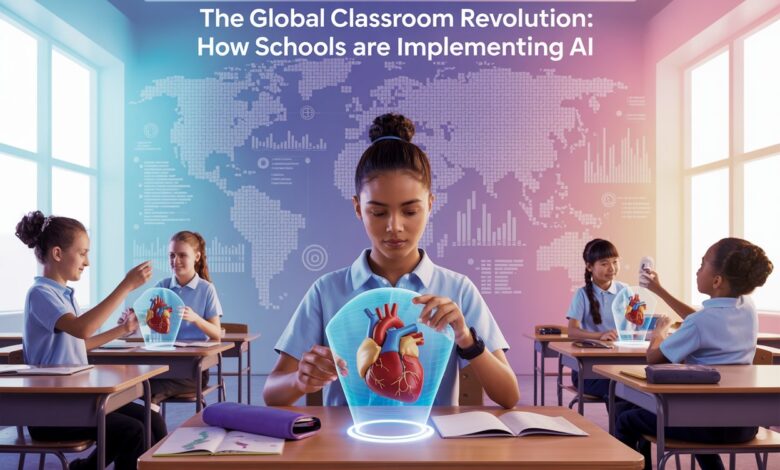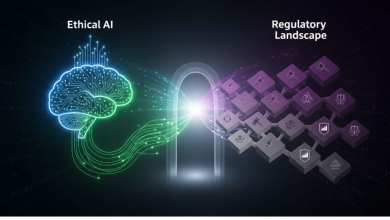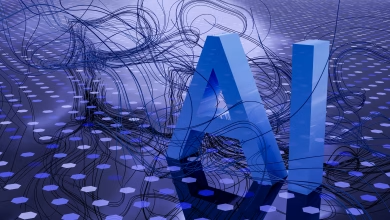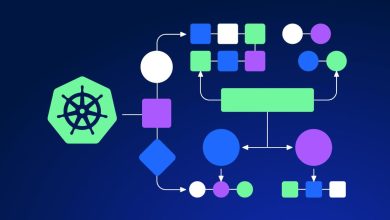
Artificial intelligence is reshaping education on a global scale, transforming how teachers deliver lessons, how students learn, and how schools prepare young minds for an increasingly automated future. From Silicon Valley to Singapore, from Toronto to Tokyo, educational institutions are discovering that AI-powered teaching resources offer unprecedented opportunities to enhance learning outcomes whilst addressing persistent educational challenges.
The International AI Education Landscape
Across continents, schools face remarkably similar challenges: teacher shortages, diverse learning needs, administrative burdens, and the pressure to prepare students for jobs that may not yet exist. AI teaching resources emerge as a universal solution, though implementation varies significantly based on regional contexts and educational philosophies.
Leading nations demonstrate diverse approaches to AI integration. Singapore’s comprehensive AI curriculum weaves computational thinking throughout all subjects. Finland prioritises teacher empowerment, ensuring educators lead AI implementation rather than being led by it. The United States sees varied adoption rates, with innovative districts pioneering whilst others remain cautious. Canada balances innovation with privacy concerns, creating frameworks that protect student data whilst enabling technological advancement.
These varied approaches offer valuable lessons. Success doesn’t depend solely on technological infrastructure or funding levels. Instead, the most effective implementations share common elements: strong teacher training, clear pedagogical goals, and commitment to ethical AI use. Schools worldwide can learn from these patterns whilst adapting strategies to their unique contexts.
The democratisation of AI tools means that schools in developing nations can potentially leapfrog traditional technological barriers. Cloud-based AI platforms require minimal infrastructure, making advanced educational technology accessible to institutions that might struggle with conventional computing resources.
Why Global Educators Embrace AI Training
The teaching profession faces unprecedented demands worldwide. Educators must differentiate instruction for increasingly diverse classrooms, maintain engagement in digital-native students, and prepare learners for rapid technological change. AI training equips teachers with tools to meet these challenges effectively.
Workload reduction remains a universal motivator. Teachers globally spend excessive hours on lesson planning, grading, and administrative tasks. AI-powered teaching materials can generate differentiated worksheets in minutes, provide instant feedback on student work, and automate routine communications. This efficiency doesn’t diminish teaching quality; it enhances it by freeing educators to focus on human connections and creative instruction.
“The beauty of AI in education lies not in its ability to replace human teachers, but in its capacity to amplify their impact,” explains Michelle Connolly, founder of LearningMole.com and veteran educator with over 15 years of international teaching experience. “When teachers worldwide embrace these tools, they discover new ways to reach every student, regardless of learning style or ability level.”
Student engagement increases when lessons incorporate AI elements. Digital natives respond positively to interactive, personalised learning experiences. AI tools can gamify education, provide immediate feedback, and adapt difficulty levels in real-time, maintaining optimal challenge levels that keep students motivated without causing frustration.
https://www.youtube.com/watch?v=W631WArdFOs
Core AI Competencies for Modern Educators
Successful AI integration requires educators to develop specific competencies that blend technological understanding with pedagogical expertise. These skills transcend subject boundaries and grade levels, forming a foundation for effective AI use in any educational context.
Understanding AI fundamentals empowers teachers to make informed decisions about tool selection and implementation. Educators need not become computer scientists, but grasping basic concepts about machine learning, data training, and algorithmic decision-making helps them evaluate AI tools critically and explain them to students appropriately.
Prompt engineering emerges as an essential skill for educators worldwide. Crafting effective prompts for AI systems can revolutionise lesson planning, resource creation, and assessment design. Teachers who master this skill report significant time savings and improved resource quality. The ability to guide AI systems to produce educationally appropriate, culturally sensitive content becomes invaluable.
Data literacy helps educators interpret AI-generated insights about student performance. Modern AI platforms provide detailed analytics about learning patterns, knowledge gaps, and progress trends. Teachers who understand these data representations can make more informed instructional decisions and provide targeted support where needed most.
Digital citizenship and AI ethics form crucial components of modern education. Teachers must model responsible AI use, teach students to evaluate AI-generated content critically, and foster discussions about AI’s societal implications. These conversations prepare students to navigate an AI-infused world thoughtfully and ethically.
Subject-Specific AI Implementation Strategies
Mathematics instruction benefits enormously from AI integration. Adaptive problem sets adjust to individual student abilities, providing appropriate challenges whilst building confidence. AI tutors offer step-by-step guidance, allowing students to learn at their own pace. Pattern recognition exercises introduce machine learning concepts whilst reinforcing mathematical thinking.
Language arts teachers utilise AI writing assistants to support composition development. These tools help students overcome writer’s block, expand vocabulary, and refine grammar. Rather than replacing the writing process, AI becomes a collaborative partner, helping students express ideas more clearly whilst maintaining their unique voice.
Science educators leverage AI for data analysis and simulation. Virtual experiments powered by AI allow students to explore dangerous, expensive, or impossible scenarios safely. Machine learning models help students understand complex systems, from ecosystem dynamics to molecular interactions.
Social studies and history classes use AI to analyse historical patterns, compare sources, and explore alternative historical scenarios. Natural language processing helps students examine primary sources, whilst AI-generated visualisations bring historical data to life.
Arts education incorporates AI as both tool and subject. Students explore AI-generated art, music composition algorithms, and creative coding. These experiences spark discussions about creativity, authorship, and the intersection of technology and human expression.
LearningMole’s Comprehensive AI Course Framework
LearningMole.com has developed an internationally accessible AI training programme that acknowledges diverse educational contexts whilst maintaining high standards. The platform’s approach recognises that effective AI integration looks different in various settings but shares common foundational elements.
The curriculum structure accommodates different educational systems, from K-12 to international baccalaureate frameworks. Modules map to various national standards whilst maintaining flexibility for local adaptation. This versatility ensures relevance whether schools follow Common Core standards, provincial curricula, or international programmes.
Video-based learning modules transcend language barriers through visual demonstrations and practical examples. Subtitles and transcripts in multiple languages ensure accessibility, whilst cultural considerations inform content development. Teachers worldwide can access training that respects their educational traditions whilst introducing innovative practices.
Practical resources include adaptable templates, lesson plans, and assessment tools. These materials serve as starting points that teachers can customise for their specific contexts. The resources acknowledge varying technology access levels, offering both high-tech and low-tech implementation options.
Community support connects educators globally, fostering cross-cultural exchange of ideas and experiences. Teachers share successes, troubleshoot challenges, and adapt strategies collaboratively. This international network becomes a powerful professional development resource, extending learning beyond formal training modules.
Navigating Implementation Challenges
Infrastructure limitations affect schools differently worldwide. While some institutions boast one-to-one device programmes, others share limited computers among many students. Successful AI implementation acknowledges these realities, offering solutions that work within existing constraints rather than demanding wholesale infrastructure overhaul.
Cultural considerations shape AI adoption significantly. Some communities embrace technological innovation enthusiastically, whilst others approach it cautiously. Schools must balance global best practices with local values, ensuring AI integration respects cultural norms and addresses community concerns.
Privacy regulations vary dramatically across jurisdictions. GDPR in Europe, COPPA in the United States, and emerging frameworks elsewhere create complex compliance requirements. Schools need AI platforms that navigate these regulations whilst maintaining educational effectiveness.
Professional development timelines differ based on educational calendars and teacher availability. Some systems provide dedicated training time, whilst others expect teachers to upskill independently. Flexible, self-paced training options accommodate these varied circumstances.
Building Sustainable AI Integration Models
Sustainability in AI education requires more than initial implementation; it demands ongoing support, continuous learning, and adaptive strategies. Schools worldwide are developing models that ensure AI integration becomes embedded practice rather than temporary innovation.
Starting small with pilot programmes allows schools to test approaches, identify challenges, and build success stories. These controlled implementations provide valuable data about what works in specific contexts, informing broader rollout strategies.
Teacher champions play crucial roles in sustainable adoption. When respected educators demonstrate AI’s benefits, colleagues become more receptive to change. These champions bridge the gap between administration mandates and classroom realities, translating policy into practice.
“Sustainable AI integration happens when teachers see tangible benefits for their students,” notes Michelle Connolly. “Whether in Bangkok or Boston, educators embrace tools that genuinely improve learning outcomes. Our role at LearningMole.com is to provide the training and resources that make these benefits achievable for every teacher.”
Continuous evaluation ensures AI tools continue serving educational goals. Regular assessment of tool effectiveness, student outcomes, and teacher satisfaction informs ongoing adjustments. This iterative approach allows schools to refine their AI strategies based on evidence rather than assumptions.
Frequently Asked Questions
How can schools with limited budgets implement AI teaching resources? Start with free AI tools and gradually invest in paid platforms as benefits become evident. Many AI education platforms offer tiered pricing or educational discounts. LearningMole.com provides affordable training options that help schools maximise their AI investments.
What training timeline should schools expect for AI implementation? Initial teacher training typically requires 10-15 hours spread over several weeks. However, developing true proficiency is an ongoing process. Schools should plan for continuous professional development as AI tools evolve and new applications emerge.
How do AI teaching resources support multilingual classrooms? Many AI platforms offer multilingual support, automatic translation, and culturally diverse content. These features help teachers serve diverse student populations whilst maintaining educational quality across languages.
Can AI tools work effectively with limited internet connectivity? Some AI applications require constant internet access, but others offer offline capabilities. Schools can download AI-processed materials during connected periods for later offline use. Hybrid approaches balance AI benefits with infrastructure realities.
How do schools measure the impact of AI integration on student learning? Establish baseline metrics before implementation, then track changes in engagement, achievement, and efficiency. Both quantitative data (test scores, completion rates) and qualitative feedback (student surveys, teacher observations) provide valuable insights.
Embracing the Educational Future
The global classroom revolution powered by AI is not approaching – it’s here. Schools worldwide are discovering that AI teaching resources offer practical solutions to persistent educational challenges whilst opening new possibilities for student engagement and achievement.
LearningMole.com stands at the forefront of this transformation, providing educators worldwide with the training, resources, and support needed for successful AI integration. The platform’s comprehensive approach ensures that schools, regardless of location or resources, can participate in this educational evolution.
As artificial intelligence continues reshaping our world, schools that embrace AI-powered teaching resources position their students for success in an uncertain future. The tools exist, the training is available, and the global community of educators stands ready to support this journey. The question remains: will your school join this worldwide educational transformation?




